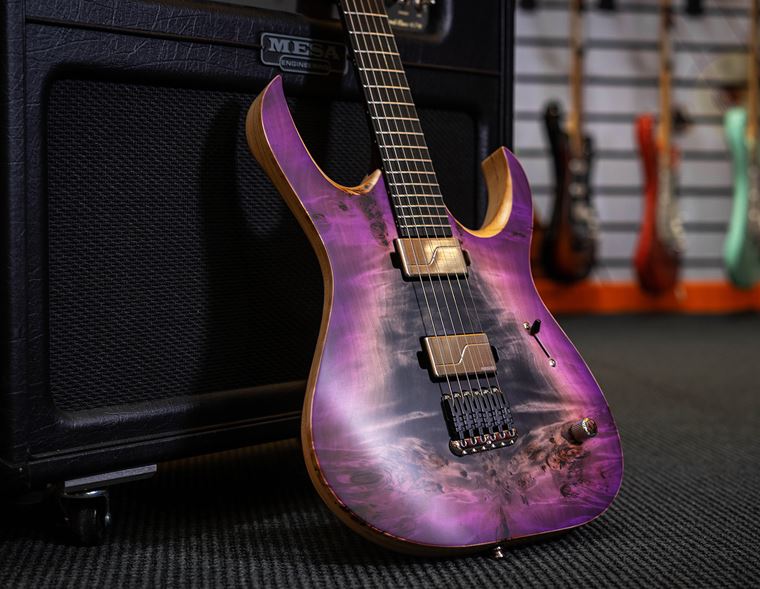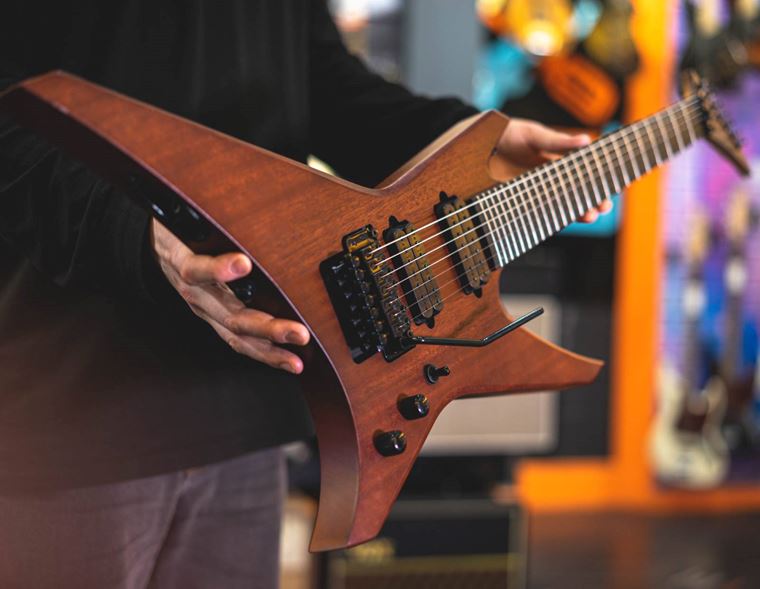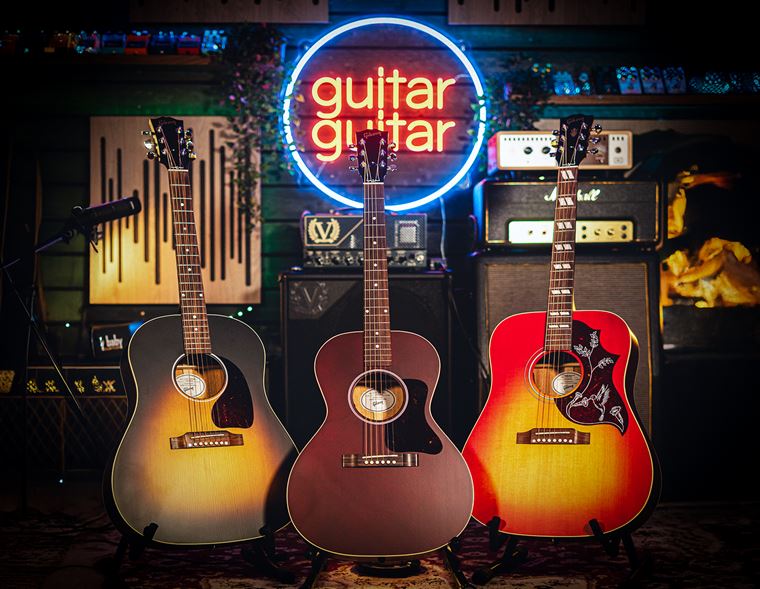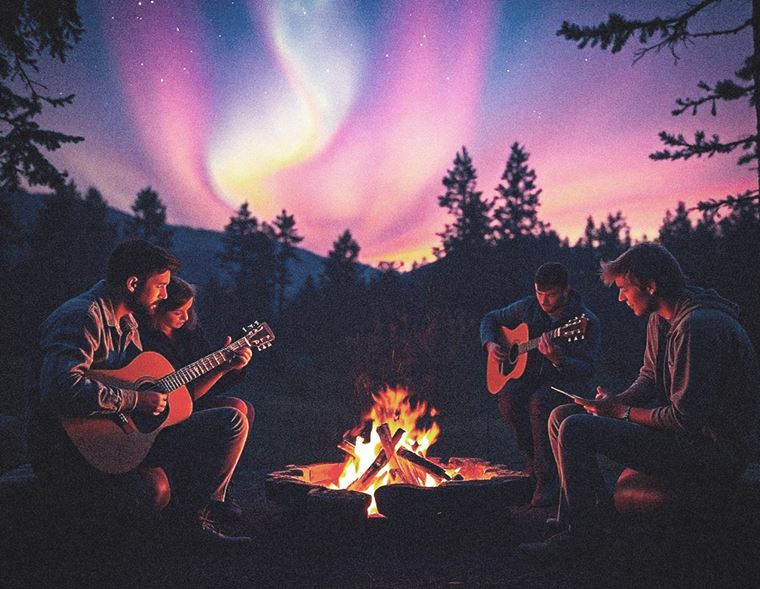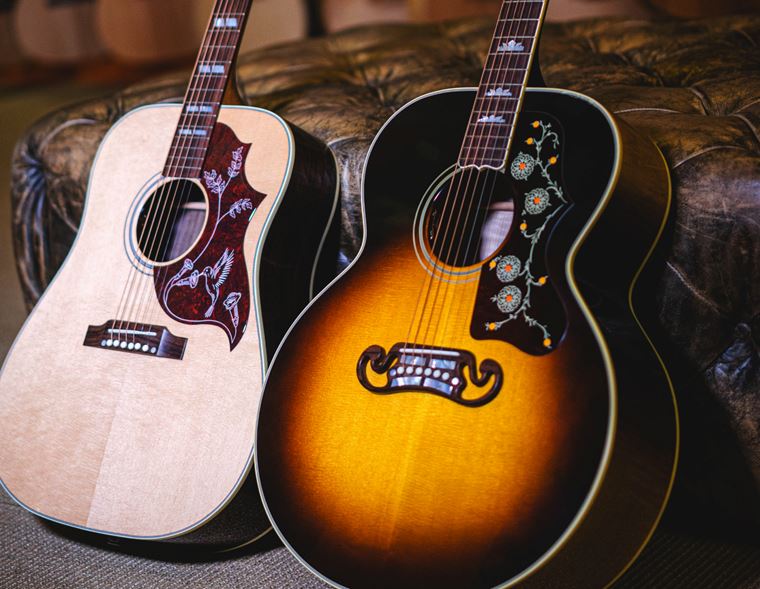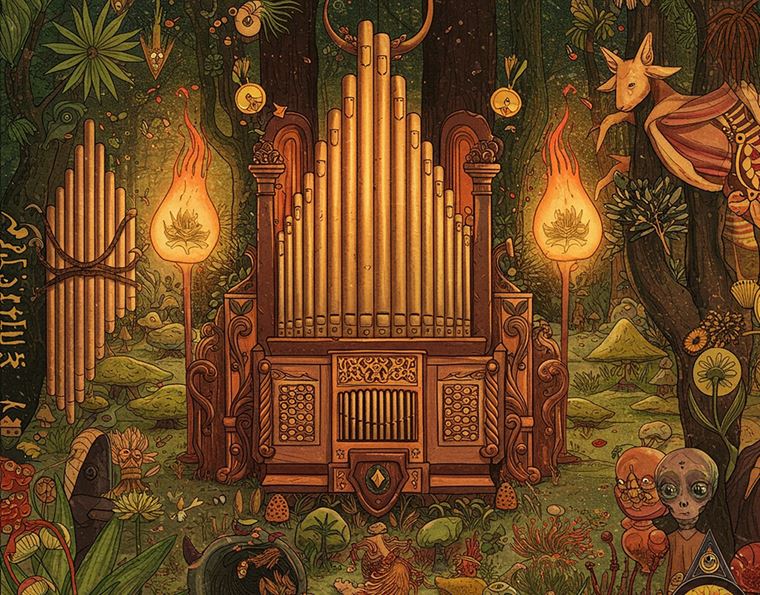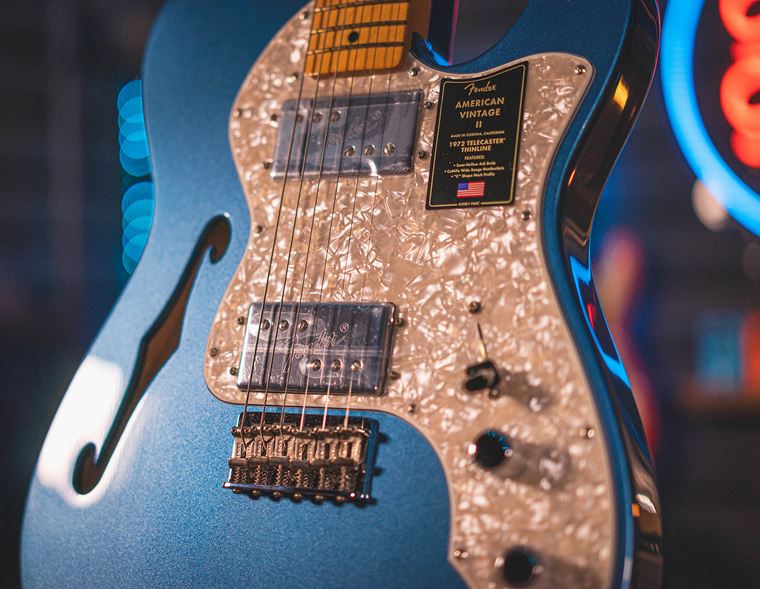10 Best Guitars for Folk Musicians: Our Expert Buying Guide
What do YOU hear when you think of folk music?
A fiddle or a banjo? A flute? Bagpipes? Probably all of the above and then some.
But what about a guitar? Whether it’s an accompaniment to a traditional tune or strummed chords in a 60s style protest song, the guitar has a righteous place in folk music. But what is the best guitar for folk musicians? This is what I’ll try to answer in today’s blog. Having worked in the guitarguitar acoustic guitars department for a few years, I had a great time helping find the right guitar for many a folk player over the years. I feel that my shop floor experience will only solidify my expertise in today’s recommendations. I’ll go over some of the most common choices as well as some less obvious ones, with various budget levels so that YOU can find the best fit for your playing needs. Ready? Let’s go!

Contents:
- What is a Folk Guitar?
- What Kind of a Guitar is Best for Folk Music?
- What to Look for in a Folk Guitar?
- How to Find the Best Folk Guitar for You?
- 11 Best Guitars for Folk Music Today
- Final Thoughts
What is a Folk Guitar?
Generally speaking, what we mean when we refer to a folk guitar is a particular body size and shape which informs the overall sound the instrument produces. The rule of thumb is that the bigger the body of an acoustic guitar the fuller, louder the sound - and the smaller the body, the quieter the sound. A folk guitar sits somewhere in-between: it tends to have a decent size lower bout but more pronounced waist (than a popular dreadnought guitar) and narrower ‘shoulders’ (or upper bout). More often than not a folk guitar will have a cutaway, which allows the player to reach the upper fretboard register with ease. All in all, a folk guitar’s purpose is to be a perfect fingerstyle instrument.
Here’s a picture of a most generic folk shape guitar to give you an idea what this all means:
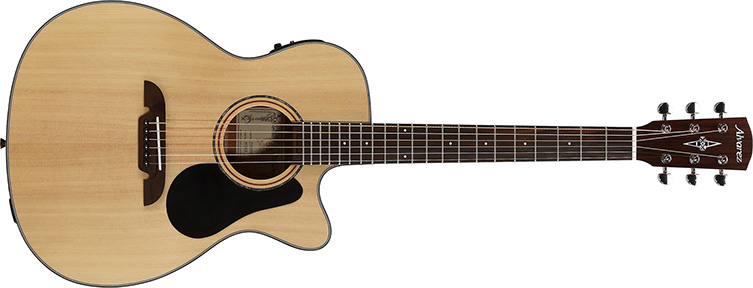
What Kind of a Guitar is Best for Folk Music?
Now, what I think is important to highlight is that every brand on the market will have their own way of naming their take on a folk guitar. And effectively - you’ll actually rarely see a guitar having the word ‘folk’ in the name. Instead, you will come across a particular coding system that will indicate what guitar size/shape you have in your hands.
Let me talk you through some most popular ones:
Martin guitars have their own number system: 0, 00, 000 or OM would classify as folk guitars for them.
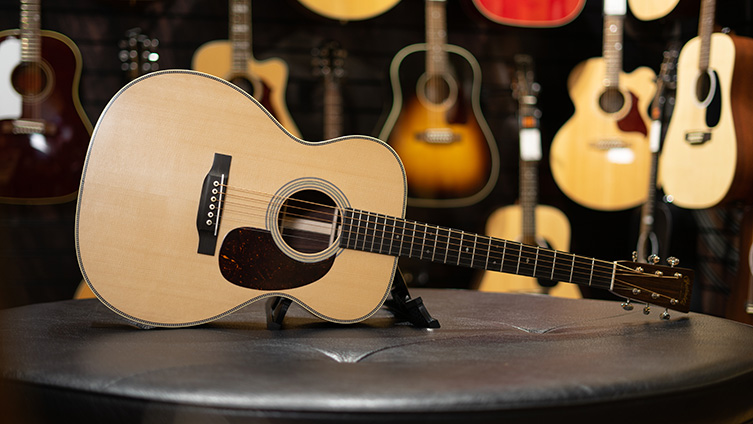
Taylor offers their unique designs and what falls under a folk guitar would here be Grand Auditorium or Grand Concert. These can be easily identified by their looks but also by their numbering system. What interests us today is the third number in the model name which relates to the body size, and in particular a 2 and a 4, e.g. in 214ce the 4 means you’ve got a Grand Auditorium cutaway, and in 212ce you’ve got the Grand Concert cutaway. Easy, right?
Lowden guitars are in my opinion the best folk guitars no matter what size they come in and that's to do with the original design, carving, body depth and tonewoods selection: a lot of cedar top options which I believe is most desired for a folk fingerstyle player. Cedar tends to have a mellower yet more percussive response and ages quite differently than spruce. Pair it with walnut for boomier, deeper sound or with rosewood for a more pronounced resonance. As such, the Lowden F is what I’d say comes close to a folk size instrument although it will be very different from, say, a Martin OM model. What I found particularly appealing about Lowden is that something magical happens when you tune them into DADGAD. If the Celtic style of playing is what you’re into, then I can’t recommend them enough.
Speaking of Celtic guitar, a lot of trad players will often reach for a nylon string guitar to achieve that particular tone we tend to associate with mystical melodies. And as long as you don’t go reaching for a flamenco guitar (harder string tension, different action) then the world is your oyster. What’s very important however, is the tonewood here and again, cedar is the one you want for Celtic folk sounds. It is much darker and deeper than spruce (although a slightly softer wood) and that’s what makes it resonate in DADGAD so well. Cordoba offers a great variety of cedar top guitars at every price point.
Alvarez has a range of fantastic folk sized models, starting from their entry level AF30 which stands for Alvarez Folk - no brainer here.
Yamaha offers a folk size option in nearly every range: any APX, FS, FG or Storia will be a good choice.
These are just most typical examples for a fingerstyle guitar playing. Now, when it comes to Americana style folk or any kind of a genre leaning more towards the singer-songwriter tradition, you’ll notice that predominantly used guitars are those with significantly larger bodies - dreadnought shaped - such as an Epiphone Dove, or Gibson Hummingbird. Are these folk guitars then? Well, not exactly. They just serve a slightly different purpose: here what’s important is the chords that accompany the singer, therefore you’d want your guitar to be loud and provide a steady rhythm rather than single-note melody, for the melody line is sung here.
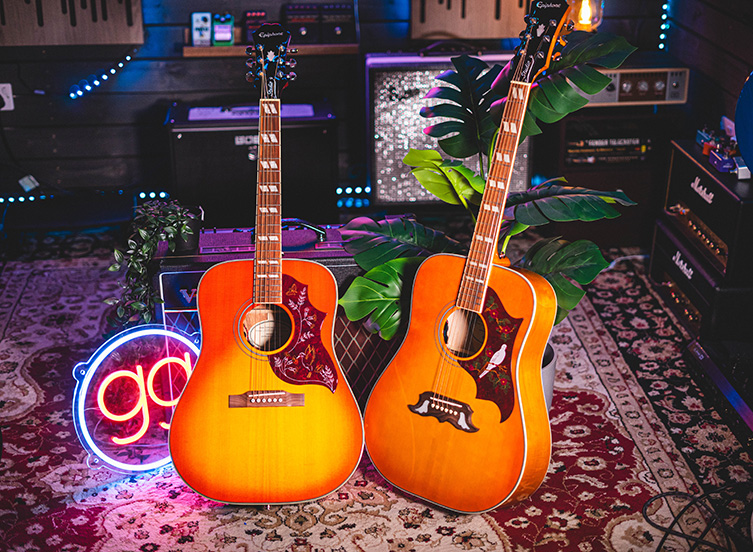
I could go on about every brand we stock and give you a rough idea of what to go for but this blog would quickly turn into a bottomless well. Instead, here’s a shortcut for you to check our tagline of folk guitars and all the recommendations will be right there to browse through.
What to Look for in a Folk Guitar?
Here’s a list of the most common features to look for when choosing your folk guitar; all in one place to serve you for a handy reference:
-
Body size with a decent size lower bout, pronounced waist and narrower upper bout
-
Cutaway version (best for reaching the upper register when plucking intricate melodies)
- Thicker body depth (DADGAD)
-
Nylon strings (Celtic fingerstyle)
-
Most popular tonewoods to go for:
Cedar top + Walnut back & sides
Cedar top + Rosewood back & sides
Spruce top + walnut back & sides
Spruce top + Rosewood back & sides
All Mahogany
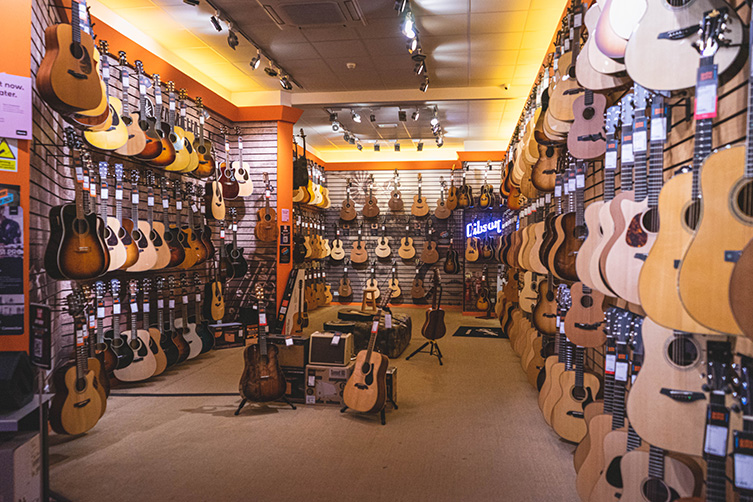
How to Find the Best Folk Guitar for You?
I think choosing a guitar is such a personal choice there really isn’t a one-fit-all template to go by. If you’re looking for the best folk guitar for YOU, my honest recommendation is to come into the guitar store and physically try a few options. That’s something I’d always do with my customers, allow them to try a selection of brands, body sizes and tonewoods so that they can feel the instrument and test what works best for them as players.
If guitarguitar doesn’t have a branch near you, then I would suggest checking out our YouTube channel for particular model demos (you’ll often find these videos embedded into most product specs on our website for shortcuts).
In simple terms speaking, if you know what kind of folk you want to play, my basic breakdown of what tonewoods and body shapes in the paragraphs above should suffice to give you an idea what to go for.
If you still struggle with a choice, why not give us a call and speak to an acoustic guitar specialist? Or try our Live Chat if you’re needing that last minute extra reassurance.
And remember, here at guitarguitar we offer a 14-day exchange and return policy so if you end up choosing a guitar you don’t get on with, simply get in touch and we’ll always do our best to make sure you’re 100% happy with your final guitar choice.
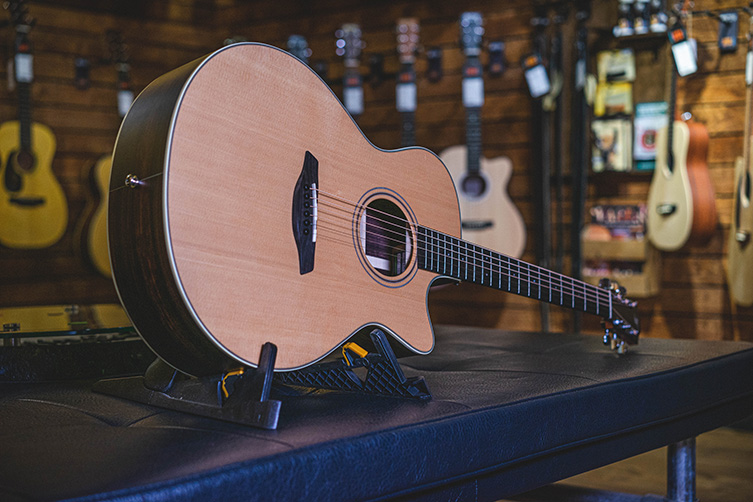
Listening to a lot of folk music is what I always recommend for anyone who is just getting started in their folk playing journey. We are lucky to have a wealth of amazing folk musicians here in the UK, from traditional to contemporary (Tony McManus, Kris Drever), a multitude of folk music festivals (Celtic Connections) and some great radio stations playing some serious talent. Or if the sound of the decades past is what’s close to your heart, then 60s folk revival may be a theme to venture into (Bob Dylan, Woody Guthrie, Neil Young, Bert Jansch).
Appalachian folk lover? You may want to check out Doc Watson! Once you get an idea of what sound you like best, it becomes easy to narrow it down to what is the best folk guitar for you. Look at the videos of their performances, try to identify what they play. I often find that many great folk musicians I admire play guitars that are custom made to suit their playing style but that doesn’t mean you can’t get a guitar that’s like-for-like and readily available.
11 Best Guitars for Folk Music Today
I’ve prepared a selection of guitars that are best for folk music in my opinion. These also come in other colours, with or without pickups and most have a budget or boutique equivalent. As such, these are mere examples. Take a look, have a listen, pop in to play a few!
Final Thoughts
Choosing the best guitar for folk can be tricky if you’re unsure what to really look for. I hope today’s blog helps you understand the realm of folk guitars a little more and I hope I’ve inspired the inner folk guitarist in you!
And remember - the best guitar for folk music is the one YOU enjoy playing.




